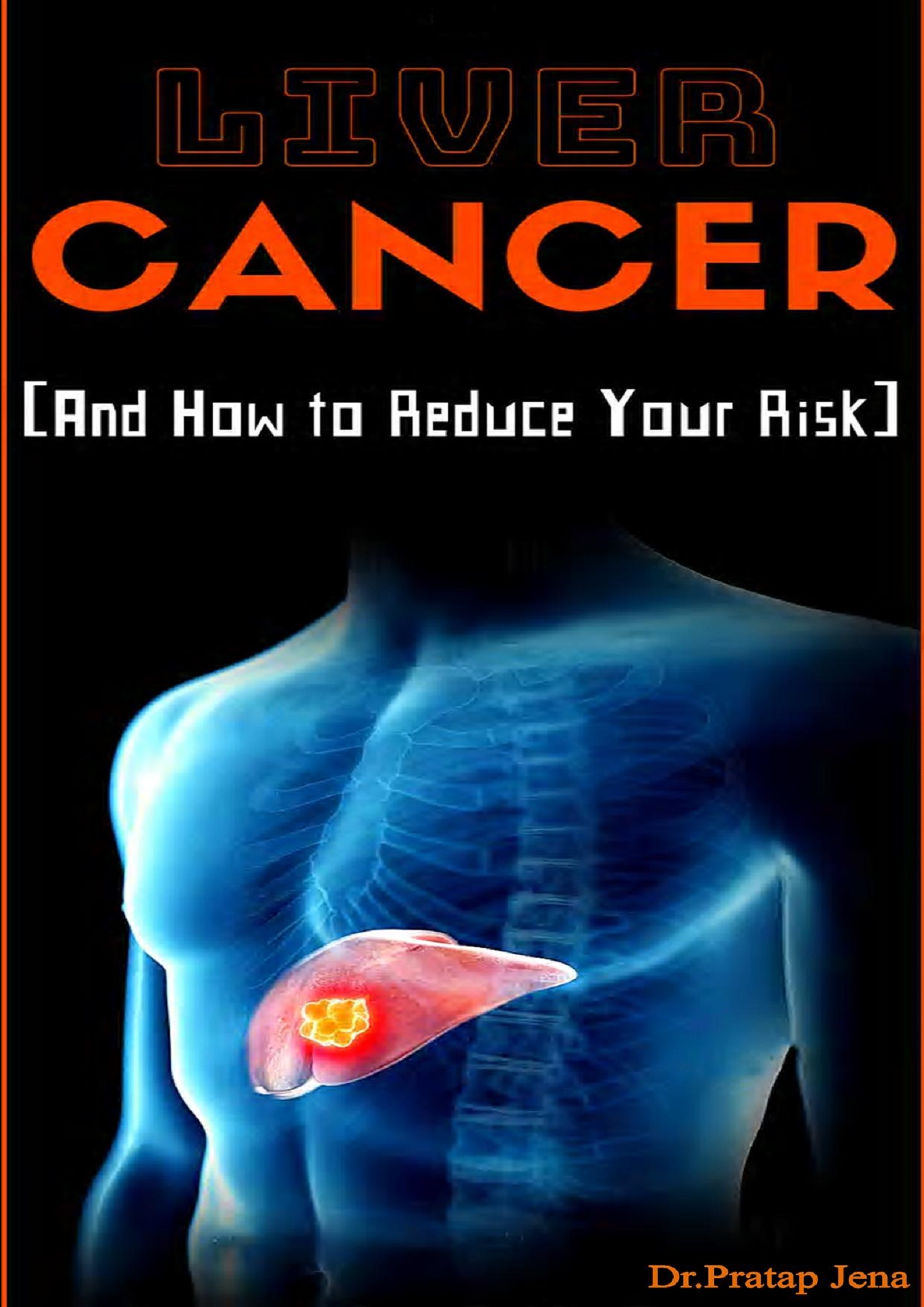
Liver Cancer and How to Reduce Your Risk
On Sale
$3.00
$3.00
Liver cancer will be cancer that happens in the liver. The liver is the largest glandular organ in the body and performs different critical functions to keep the body free of toxins and hurtful substances. It's located in the right upper quadrant of the abdomen, right below the ribs. The liver is in charge of creating bile, which is a substance that helps you digest fats, vitamins, and other nutrients. This vital organ likewise stores nutrients, for example, glucose, with the goal that you stay sustained at times when you're not eating. It likewise separates medications and toxins. At the point when cancer develops in the liver, it destroys liver cells and interferes with the ability of the liver to function typically.
Liver cancer is commonly classified as essential or auxiliary. Essential liver cancer starts in the cells of the liver. Optional liver cancer develops when cancer cells from another organ spread to the liver. In contrast to other cells in the body, cancer cells can split far from the essential site, or where the cancer started. The cells travel to other regions of the body through the bloodstream or the lymphatic system. Cancer cells eventually collect in another body organ and start to develop there.
This article focuses on essential liver cancer. If you had cancer in another organ before you developed liver cancer, it would be ideal if you see our article about liver metastasis to learn increasingly about optional liver cancer.
The different types of essential liver cancer originate from the different cells that make up the liver. Essential liver cancer can start as a solitary irregularity developing in the liver, or it can start in numerous spots within the liver in the meantime. People with extreme liver harm are bound to have multiple cancer growth sites. The principle types of essential liver cancer are:
Hepatocellular carcinoma
Hepatocellular carcinoma (HCC), otherwise called hepatoma, is the most common type of liver cancer, accounting for 75 percent of every single liver cancer. This condition develops in the hepatocytes, which are the predominant liver cells. It can spread from the liver to other parts of the body, for example, the pancreas, intestines, and stomach. HCC is considerably more prone to happen in people who have extreme liver harm because of alcohol abuse.
Cholangiocarcinoma
Cholangiocarcinoma, all the more commonly known as bile duct cancer, develops in the little, tube-like bile ducts in the liver. These ducts convey bile to the gallbladder to help with digestion. Bile duct cancer accounts for approximately 10 to 20 percent of every liver cancer. At the point when the cancer starts in the section of the ducts inside the liver, it's called intrahepatic bile duct cancer. At the point when the cancer starts in the section of the ducts outside the liver, it's called extrahepatic bile duct cancer.
Liver Angiosarcoma
Liver angiosarcoma is an uncommon type of liver cancer that starts in the blood vessels of the liver. This type of cancer tends to advance all around rapidly, so it's typically analyzed at a further developed stage.
Hepatoblastoma
Hepatoblastoma is an extremely uncommon type of liver cancer. It's nearly constantly found in youngsters, particularly those under age 3. With surgery and chemotherapy, the outlook for people with this type of cancer can be awesome. At the point when hepatoblastoma is detected in the early stages, the survival rate is higher than 90 percent.
It is significantly less basic than cancers that frame in different regions of the body and spread to the liver (a metastasis of another disease).
•Hepatocellular carcinoma is the most widely recognized kind of Liver cancer
•Symptoms and symptoms of Liver cancer incorporate pale, white stools, a swollen stomach area, jaundice, weariness, weight reduction, disease and regurgitating, and torment in the upper belly, back, or right shoulder bone. These symptoms may not all be available and can likewise happen because of different conditions that Liver cancer
•A hard irregularity under the rib confine on the correct side might be available sometimes.
•The phase of the cancer (the degree to which it has spread) and the general soundness of the patient both assume a part in deciding the standpoint (future or survival rate) of the cancer.
Liver cancer Is a Disease in Which Riskous (Cancer) Cells Shape in the Tissues of the Liver.
The liver is one of the biggest organs in the body. It has four projections and fills the upper right half of the guts inside the rib confine. Three of the numerous imperative elements of the liver are:
•To channel hurtful substances from the blood so they can be passed from the body in stools and pee.
•To store glycogen (sugar), which the body uses for vitality.
Liver cancer is commonly classified as essential or auxiliary. Essential liver cancer starts in the cells of the liver. Optional liver cancer develops when cancer cells from another organ spread to the liver. In contrast to other cells in the body, cancer cells can split far from the essential site, or where the cancer started. The cells travel to other regions of the body through the bloodstream or the lymphatic system. Cancer cells eventually collect in another body organ and start to develop there.
This article focuses on essential liver cancer. If you had cancer in another organ before you developed liver cancer, it would be ideal if you see our article about liver metastasis to learn increasingly about optional liver cancer.
The different types of essential liver cancer originate from the different cells that make up the liver. Essential liver cancer can start as a solitary irregularity developing in the liver, or it can start in numerous spots within the liver in the meantime. People with extreme liver harm are bound to have multiple cancer growth sites. The principle types of essential liver cancer are:
Hepatocellular carcinoma
Hepatocellular carcinoma (HCC), otherwise called hepatoma, is the most common type of liver cancer, accounting for 75 percent of every single liver cancer. This condition develops in the hepatocytes, which are the predominant liver cells. It can spread from the liver to other parts of the body, for example, the pancreas, intestines, and stomach. HCC is considerably more prone to happen in people who have extreme liver harm because of alcohol abuse.
Cholangiocarcinoma
Cholangiocarcinoma, all the more commonly known as bile duct cancer, develops in the little, tube-like bile ducts in the liver. These ducts convey bile to the gallbladder to help with digestion. Bile duct cancer accounts for approximately 10 to 20 percent of every liver cancer. At the point when the cancer starts in the section of the ducts inside the liver, it's called intrahepatic bile duct cancer. At the point when the cancer starts in the section of the ducts outside the liver, it's called extrahepatic bile duct cancer.
Liver Angiosarcoma
Liver angiosarcoma is an uncommon type of liver cancer that starts in the blood vessels of the liver. This type of cancer tends to advance all around rapidly, so it's typically analyzed at a further developed stage.
Hepatoblastoma
Hepatoblastoma is an extremely uncommon type of liver cancer. It's nearly constantly found in youngsters, particularly those under age 3. With surgery and chemotherapy, the outlook for people with this type of cancer can be awesome. At the point when hepatoblastoma is detected in the early stages, the survival rate is higher than 90 percent.
It is significantly less basic than cancers that frame in different regions of the body and spread to the liver (a metastasis of another disease).
•Hepatocellular carcinoma is the most widely recognized kind of Liver cancer
•Symptoms and symptoms of Liver cancer incorporate pale, white stools, a swollen stomach area, jaundice, weariness, weight reduction, disease and regurgitating, and torment in the upper belly, back, or right shoulder bone. These symptoms may not all be available and can likewise happen because of different conditions that Liver cancer
•A hard irregularity under the rib confine on the correct side might be available sometimes.
•The phase of the cancer (the degree to which it has spread) and the general soundness of the patient both assume a part in deciding the standpoint (future or survival rate) of the cancer.
Liver cancer Is a Disease in Which Riskous (Cancer) Cells Shape in the Tissues of the Liver.
The liver is one of the biggest organs in the body. It has four projections and fills the upper right half of the guts inside the rib confine. Three of the numerous imperative elements of the liver are:
•To channel hurtful substances from the blood so they can be passed from the body in stools and pee.
•To store glycogen (sugar), which the body uses for vitality.

